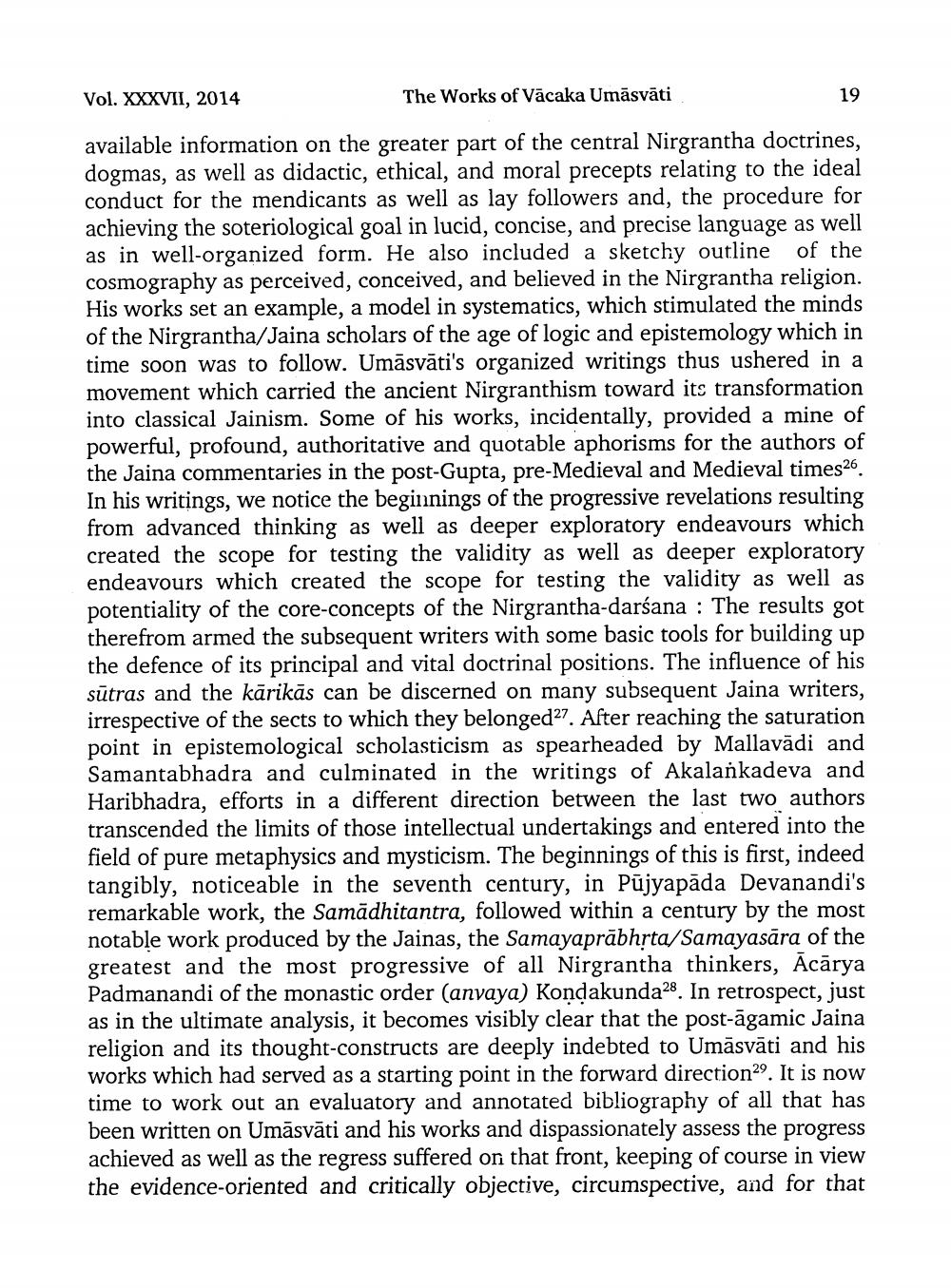________________
Vol. XXXVII, 2014
The Works of Vācaka Umāsvāti
19
available information on the greater part of the central Nirgrantha doctrines, dogmas, as well as didactic, ethical, and moral precepts relating to the ideal conduct for the mendicants as well as lay followers and, the procedure for achieving the soteriological goal in lucid, concise, and precise language as well as in well-organized form. He also included a sketchy outline of the cosmography as perceived, conceived, and believed in the Nirgrantha religion. His works set an example, a model in systematics, which stimulated the minds of the Nirgrantha/Jaina scholars of the age of logic and epistemology which in time soon was to follow. Umāsvāti's organized writings thus ushered in a movement which carried the ancient Nirgranthism toward its transformation into classical Jainism. Some of his works, incidentally, provided a mine of powerful, profound, authoritative and quotable aphorisms for the authors of the Jaina commentaries in the post-Gupta, pre-Medieval and Medieval times26. In his writings, we notice the beginnings of the progressive revelations resulting from advanced thinking as well as deeper exploratory endeavours which created the scope for testing the validity as well as deeper exploratory endeavours which created the scope for testing the validity as well as potentiality of the core-concepts of the Nirgrantha-darśana : The results got therefrom armed the subsequent writers with some basic tools for building up the defence of its principal and vital doctrinal positions. The influence of his sūtras and the kārikās can be discerned on many subsequent Jaina writers, irrespective of the sects to which they belonged27. After reaching the saturation point in epistemological scholasticism as spearheaded by Mallavādi and Samantabhadra and culminated in the writings of Akalankadeva and Haribhadra, efforts in a different direction between the last two authors transcended the limits of those intellectual undertakings and entered into the field of pure metaphysics and mysticism. The beginnings of this is first, indeed tangibly, noticeable in the seventh century, in Pujyapāda Devanandi's remarkable work, the Samādhitantra, followed within a century by the most notable work produced by the Jainas, the Samayaprābhrta/Samayasāra of the greatest and the most progressive of all Nirgrantha thinkers, Ācārya Padmanandi of the monastic order (anvaya) Kondakunda28. In retrospect, just as in the ultimate analysis, it becomes visibly clear that the post-āgamic Jaina religion and its thought-constructs are deeply indebted to Umāsvāti and his works which had served as a starting point in the forward direction29. It is now time to work out an evaluatory and annotated bibliography of all that has been written on Umāsvāti and his works and dispassionately assess the progress achieved as well as the regress suffered on that front, keeping of course in view the evidence-oriented and critically objective, circumspective, and for that




